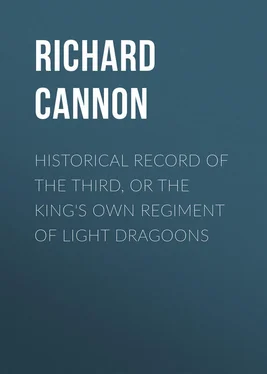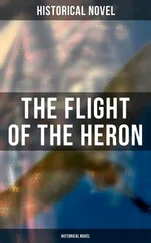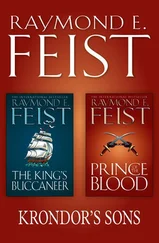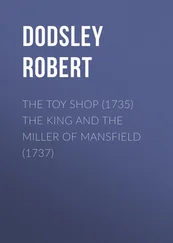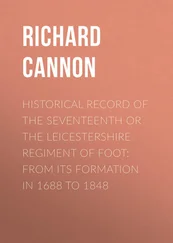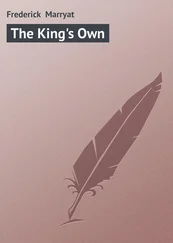Richard Cannon - Historical Record of the Third, Or the King's Own Regiment of Light Dragoons
Здесь есть возможность читать онлайн «Richard Cannon - Historical Record of the Third, Or the King's Own Regiment of Light Dragoons» — ознакомительный отрывок электронной книги совершенно бесплатно, а после прочтения отрывка купить полную версию. В некоторых случаях можно слушать аудио, скачать через торрент в формате fb2 и присутствует краткое содержание. Издательство: Иностранный паблик, Жанр: foreign_antique, foreign_prose, на английском языке. Описание произведения, (предисловие) а так же отзывы посетителей доступны на портале библиотеки ЛибКат.
- Название:Historical Record of the Third, Or the King's Own Regiment of Light Dragoons
- Автор:
- Издательство:Иностранный паблик
- Жанр:
- Год:неизвестен
- ISBN:нет данных
- Рейтинг книги:3 / 5. Голосов: 1
-
Избранное:Добавить в избранное
- Отзывы:
-
Ваша оценка:
- 60
- 1
- 2
- 3
- 4
- 5
Historical Record of the Third, Or the King's Own Regiment of Light Dragoons: краткое содержание, описание и аннотация
Предлагаем к чтению аннотацию, описание, краткое содержание или предисловие (зависит от того, что написал сам автор книги «Historical Record of the Third, Or the King's Own Regiment of Light Dragoons»). Если вы не нашли необходимую информацию о книге — напишите в комментариях, мы постараемся отыскать её.
Historical Record of the Third, Or the King's Own Regiment of Light Dragoons — читать онлайн ознакомительный отрывок
Ниже представлен текст книги, разбитый по страницам. Система сохранения места последней прочитанной страницы, позволяет с удобством читать онлайн бесплатно книгу «Historical Record of the Third, Or the King's Own Regiment of Light Dragoons», без необходимости каждый раз заново искать на чём Вы остановились. Поставьте закладку, и сможете в любой момент перейти на страницу, на которой закончили чтение.
Интервал:
Закладка:
In the succeeding reigns the Cavalry of the Army was composed of Knights (or men at arms) and Hobiliers (or horsemen of inferior degree); and the Infantry of spears and battle-axe men, cross-bowmen, and archers. The Knights wore armour on every part of the body, and their weapons were a lance, a sword, and a small dagger. The Hobiliers were accoutred and armed for the light and less important services of war, and were not considered qualified for a charge in line. Mounted Archers 1 1 In the 14th year of the reign of Edward IV. a small force was established in Ireland by Parliament, consisting of 120 Archers on horseback, 40 Horsemen, and 40 Pages.
were also introduced, and the English nation eventually became preeminent in the use of the bow.
About the time of Queen Mary the appellation of " Men at Arms " was changed to that of " Spears and Launces ." The introduction of fire-arms ultimately occasioned the lance to fall into disuse, and the title of the Horsemen of the first degree was changed to " Cuirassiers ." The Cuirassiers were armed cap-à-pié , and their weapons were a sword with a straight narrow blade and sharp point, and a pair of large pistols, called petronels; and the Hobiliers carried carbines. The Infantry carried pikes, matchlocks, and swords. The introduction of fire-arms occasioned the formation of Regiments armed and equipped as infantry, but mounted on small horses for the sake of expedition of movement, and these were styled " Dragoons ;" a small portion of the military force of the kingdom, however, consisted of this description of troops.
The formation of the present Army commenced after the Restoration in 1660, with the establishment of regular corps of Horse and Foot; the Horsemen were cuirassiers, but only wore armour on the head and body; and the Foot were pikemen and musketeers. The arms which each description of force carried, are described in the following extract from the "Regulations of King Charles II.," dated 5th May, 1663: —
"Each Horseman to have for his defensive armes, back, breast, and pot; and for his offensive armes, a sword, and a case of pistolls, the barrels whereof are not to be undr. foorteen inches in length; and each Trooper of Our Guards to have a carbine besides the aforesaid armes. And the Foote to have each soldier a sword, and each pikeman a pike of 16 foote long and not undr.; and each musqueteer a musquet with a collar of bandaliers, the barrell of which musquet to be about foor foote long and to conteine a bullet, foorteen of which shall weigh a pound weight 2 2 Military Papers, State Paper Office.
."
The ranks of the Troops of Horse were at this period composed of men of some property – generally the sons of substantial yeomen: the young men received as recruits provided their own horses, and they were placed on a rate of pay sufficient to give them a respectable station in society.
On the breaking out of the war with Holland in the spring of 1672, a Regiment of Dragoons was raised 3 3 This Regiment was disbanded after the Peace of 1674.
; the Dragoons were placed on a lower rate of pay than the Horse, and the Regiment was armed similar to the Infantry, excepting that a limited number of the men carried halberds instead of pikes, and the others muskets and bayonets; and a few men in each troop had pistols; as appears by a warrant dated the 2nd of April, 1672, of which the following is an extract: —
"Charles R.
"Our will and pleasure is, that a Regiment of Dragoones which we have established and ordered to be raised, in twelve Troopes of fourscore in each beside officers, who are to be under the command of Our most deare and most intirely beloved Cousin Prince Rupert, shall be armed out of Our stoares remaining within Our office of the Ordinance, as followeth; that is to say, three corporalls, two serjeants, the gentlemen at armes, and twelve soldiers of each of the said twelve Troopes, are to have and carry each of them one halbard, and one case of pistolls with holsters; and the rest of the soldiers of the several Troopes aforesaid, are to have and to carry each of them one matchlocke musquet, with a collar of bandaliers, and also to have and to carry one bayonet 4 4 This appears to be the first introduction of bayonets into the English Army.
, or great knive. That each lieutenant have and carry one partizan; and that two drums be delivered out for each Troope of the said Regiment 5 5 State Paper Office.
."
Several regiments of Horse and Dragoons were raised in the first year of the reign of King James II.; and the horsemen carried a short carbine 6 6 The first issue of carbines to the regular Horse appears to have taken place in 1684; the Life Guards, however, carried carbines from their formation in 1660. — Vide the 'Historical Record of the Life Guards.'
in addition to the sword and pair of pistols: and in a Regulation dated the 21st of February, 1687, the arms of the Dragoons at that period were commanded to be as follows: —
"The Dragoons to have snaphanse musquets, strapt, with bright barrels of three foote eight inches long, cartouch-boxes, bayonetts, granado pouches, buckets, and hammer-hatchetts."
After several years' experience, little advantage was found to accrue from having Cavalry Regiments formed almost exclusively for engaging the enemy on foot; and, the Horse having laid aside their armour, the arms and equipment of Horse and Dragoons were so nearly assimilated, that there remained little distinction besides the name and rate of pay. The introduction of improvements into the mounting, arming, and equipment of Dragoons rendered them competent to the performance of every description of service required of Cavalry; and, while the long musket and bayonet were retained, to enable them to act as Infantry, if necessary, they were found to be equally efficient, and of equal value to the nation, as Cavalry, with the Regiments of Horse.
In the several augmentations made to the regular Army after the early part of the reign of Queen Anne, no new Regiments of Horse were raised for permanent service; and in 1746 King George II. reduced three of the old Regiments of Horse to the quality and pay of Dragoons; at the same time, His Majesty gave them the title of First, Second, and Third Regiments of Dragoon Guards : and in 1788 the same alteration was made in the remaining four Regiments of Horse, which then became the Fourth, Fifth, Sixth, and Seventh Regiments of Dragoon Guards .
At present there are only three Regiments which are styled Horse in the British Army, namely, the two Regiments of Life Guards, and the Royal Regiment of Horse Guards, to whom cuirasses have recently been restored. The other Cavalry Regiments consist of Dragoon Guards, Heavy and Light Dragoons, Hussars, and Lancers; and although the long musket and bayonet have been laid aside by the whole of the Cavalry, and the Regiments are armed and equipped on the principle of the old Horse (excepting the cuirass), they continue to be styled Dragoons.
The old Regiments of Horse formed a highly respectable and efficient portion of the Army, and it is found, on perusing the histories of the various campaigns in which they have been engaged, that they have, on all occasions, maintained a high character for steadiness and discipline as well as for bravery in action. They were formerly mounted on horses of superior weight and physical power, and few troops could withstand a well-directed charge of the celebrated British Horse. The records of these corps embrace a period of 150 years – a period eventful in history, and abounding in instances of heroism displayed by the British troops when danger has threatened the nation, – a period in which these Regiments have numbered in their ranks men of loyalty, valour, and good conduct, worthy of imitation.
Читать дальшеИнтервал:
Закладка:
Похожие книги на «Historical Record of the Third, Or the King's Own Regiment of Light Dragoons»
Представляем Вашему вниманию похожие книги на «Historical Record of the Third, Or the King's Own Regiment of Light Dragoons» списком для выбора. Мы отобрали схожую по названию и смыслу литературу в надежде предоставить читателям больше вариантов отыскать новые, интересные, ещё непрочитанные произведения.
Обсуждение, отзывы о книге «Historical Record of the Third, Or the King's Own Regiment of Light Dragoons» и просто собственные мнения читателей. Оставьте ваши комментарии, напишите, что Вы думаете о произведении, его смысле или главных героях. Укажите что конкретно понравилось, а что нет, и почему Вы так считаете.
